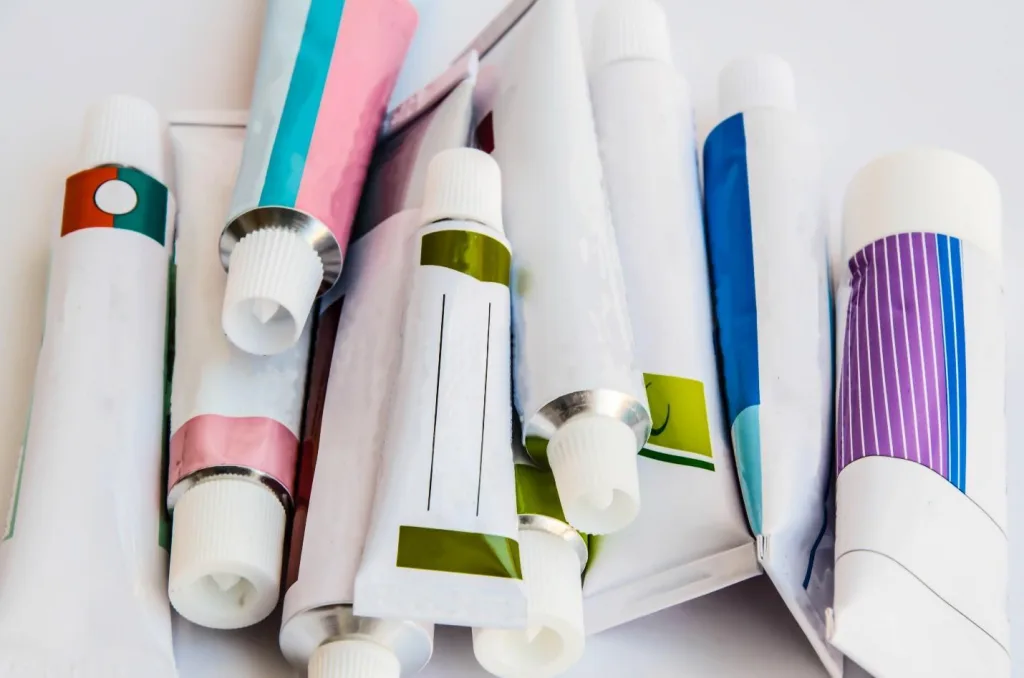Heirich Fevrier P. Manalili, RPh MD DPDS
Martha Joy Bruan-Tapales, RPh MD FPDS
There had been a lot of people (including doctors) who interchange a cream and an ointment. Knowing the difference between the two can help the patient and clinician decide on which preparation would benefit their condition more.
Ointments are semisolid preparations that contains lipid or hydrophobic ingredients intended for external application to the skin or other mucosal membranes1,2. It usually contains less than 20% of water and other volatile ingredients (eg. Ethanol), and more than 50% hydrocarbons and waxes1,2. They are designed to soften or melt at body temperature, spread easily, and have a smooth, non-gritty feel and appear translucent1. They are typically used as emollients to make skin pliable, barriers to prevent noxious substances from coming in contact to skin and vehicles for hydrophobic drugs1,2.
Creams are semisolid dosage forms containing one or more drug substances dissolved or dispersed in a suitable emulsion base1,2,3. They are more considered to be more fluid to other dosage forms1. They are usually found to have whitish, creamy appearance, due to scattering of light from dispersed phases (eg. Oil globules)1. Creams can either be on a water-in-oil emulsion (eg cold cream) which can be used as a softening and cleaning agent for make-ups1,2. On the other hand, it can also be in an oil-in-water emulsion (eg. Vanishing cream) which when rubbed on the skin, the water evaporates, leading to increased concentration of a water-soluble drug in the oily film which can adhere directly to the skin1,2.
Implications in Dermatology practice
As a vehicle, ointments have higher penetrability and are useful for thickened skin over palms and soles and over lichenified skin (eg. ichthyoses, psoriasis)4. The downside is that they are relatively greasy and messy to use. On the other hand, creams are less greasy and are more suited for moist and weeping areas of the skin (eg. Wounds with pus, blood and serum)4. Creams are preferred over ointments for mucosal areas because they are easier to spread and remove2.
In using topical steroids, the vehicle play an important role in determining the potency of the active ingredient4. For example, Mometasone furoate 0.1% cream is classified under Mid-potent (Class IV) while its counterpart Mometasone furoate 0.1% ointment is classified as high-potent (Class II).
References:
- Mahato, R. and Narang, A. Pharmaceutical Dosage Forms and Drug Delivery Third edition. CRC Press; 2018 pp. 547-562.
- Allen, L. and Ansel, H. Ansel’s Pharmaceutical Dosage Forms and Drug Delivery Systems 10th ed. Wolters Kluwer; 2014; pp.316-341.
- Sahu, T, Patel T, Sahu, S and Gidwani, B. Skin Cream as Topical Drug Delivery System: A Review. J Pharm Biol Sci 2016;4(5): 149-154.
- Mehta, AB, Nadkarmi, NJ, Patil, SP, Godse, KV, Gautam, M and Agarwal, S. Topical corticosteroids in dermatology. Indian J Dermatol Venereol Leprol 2016; 82:371-378.




